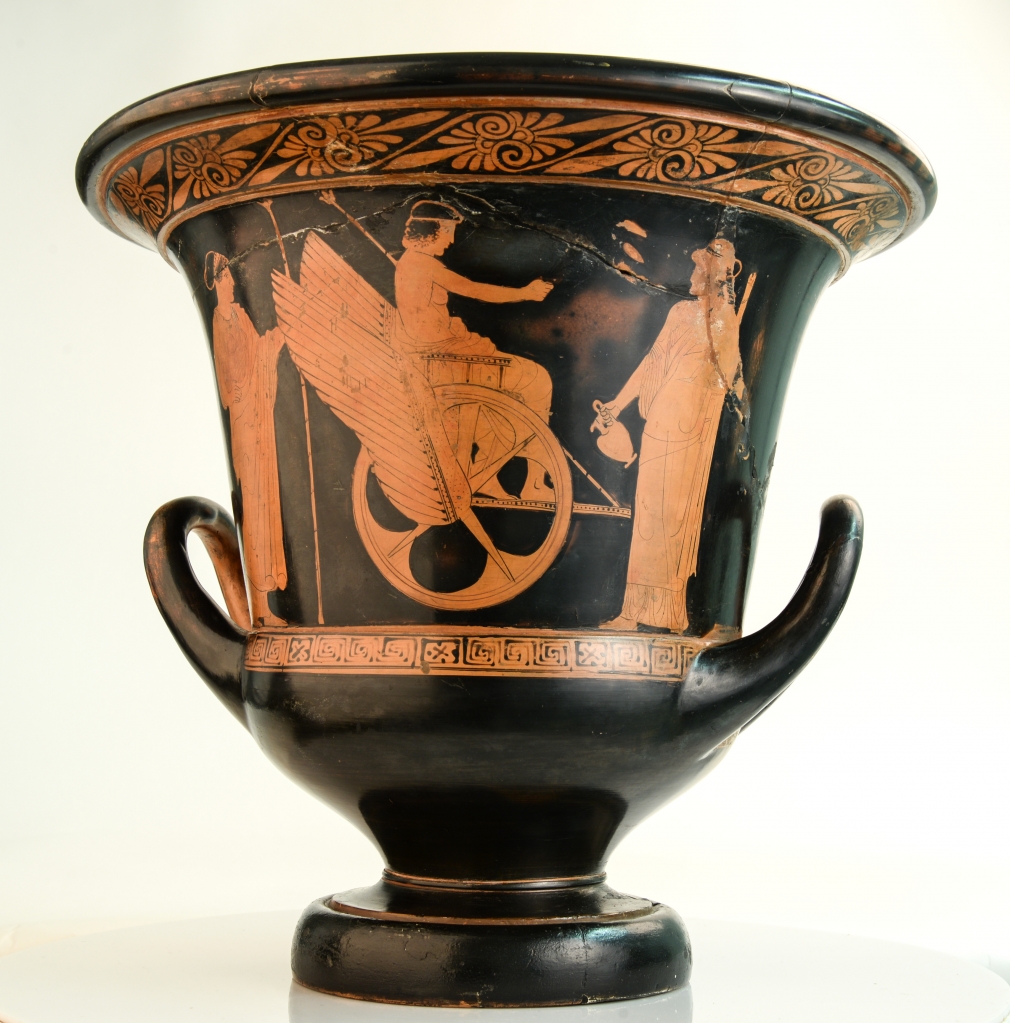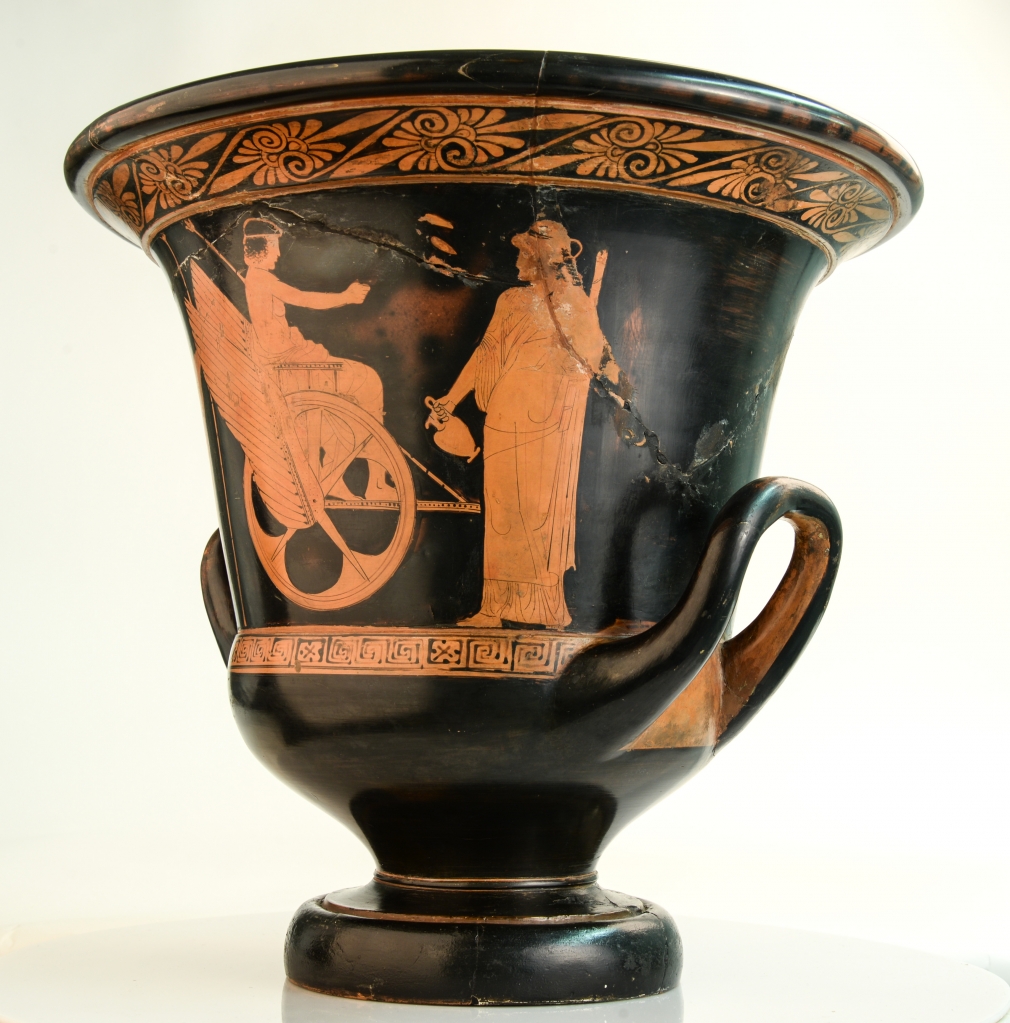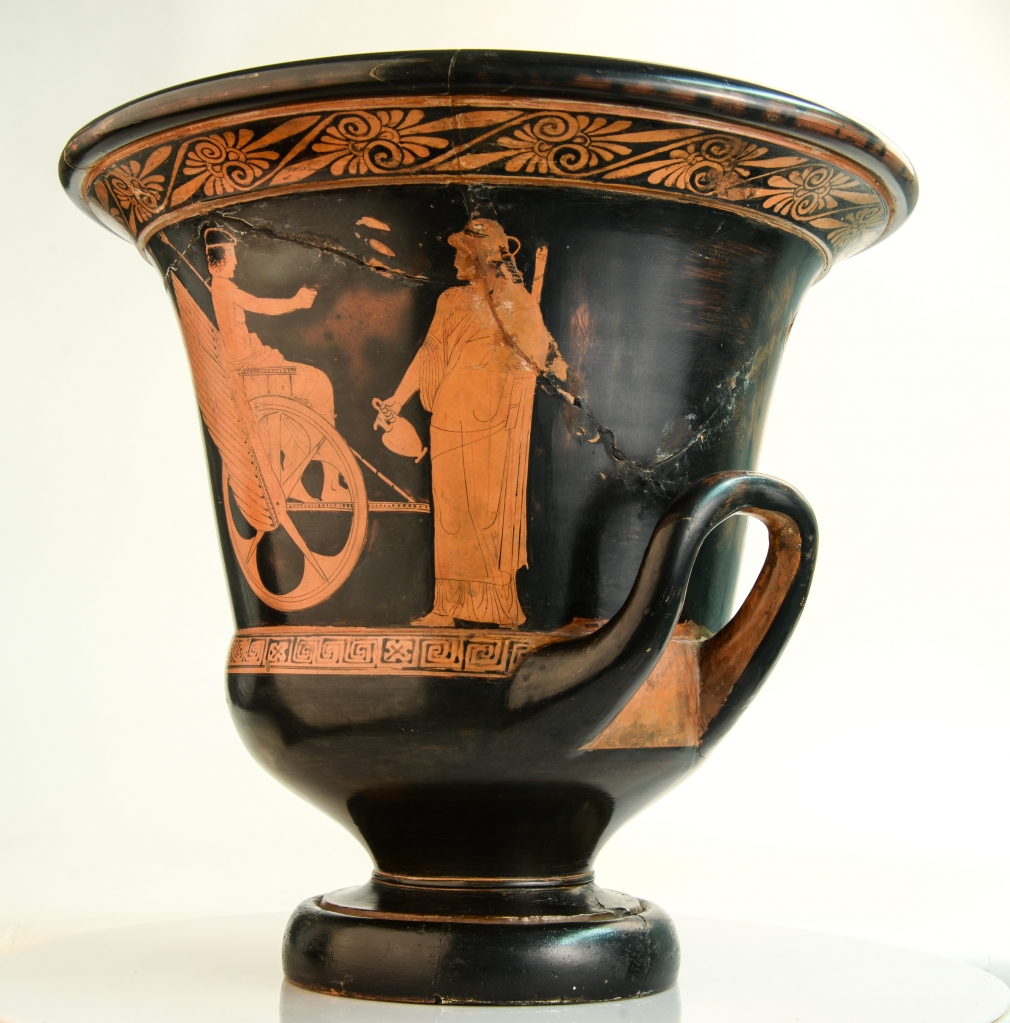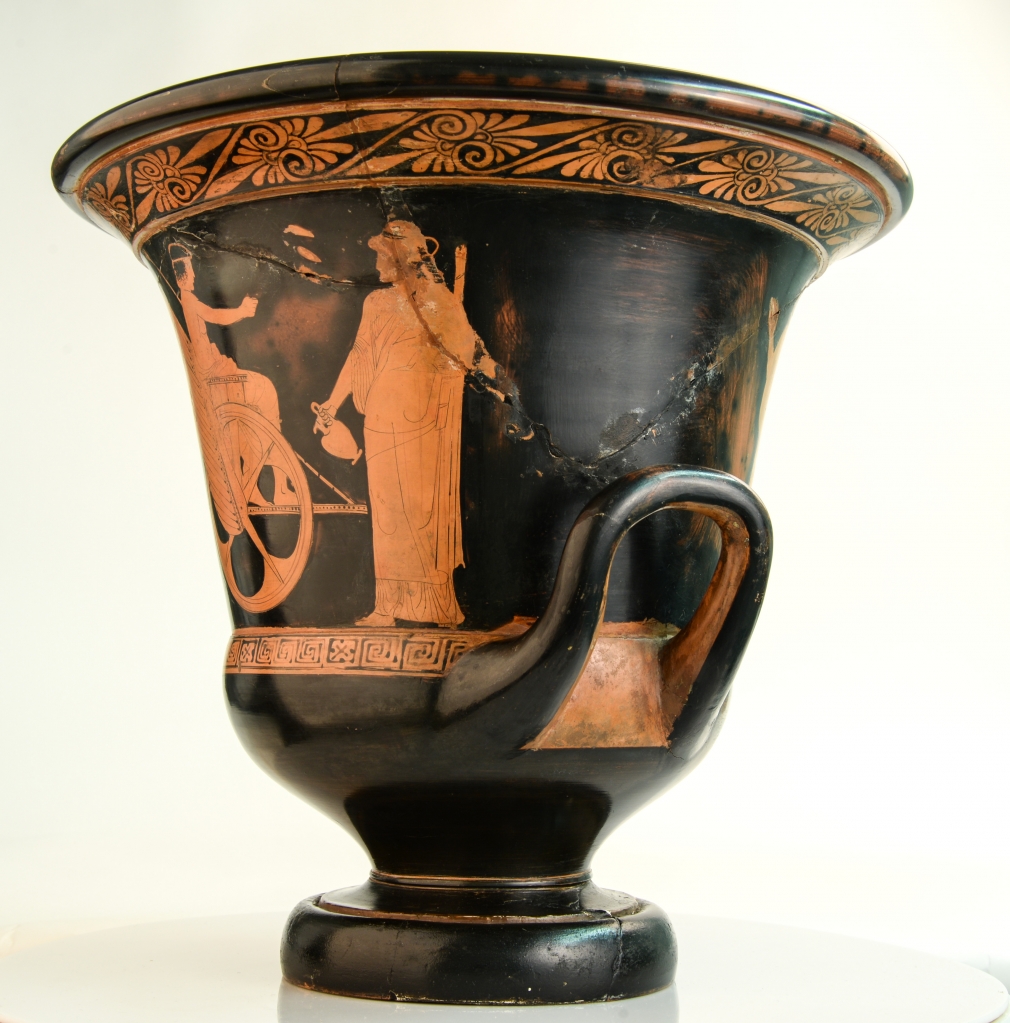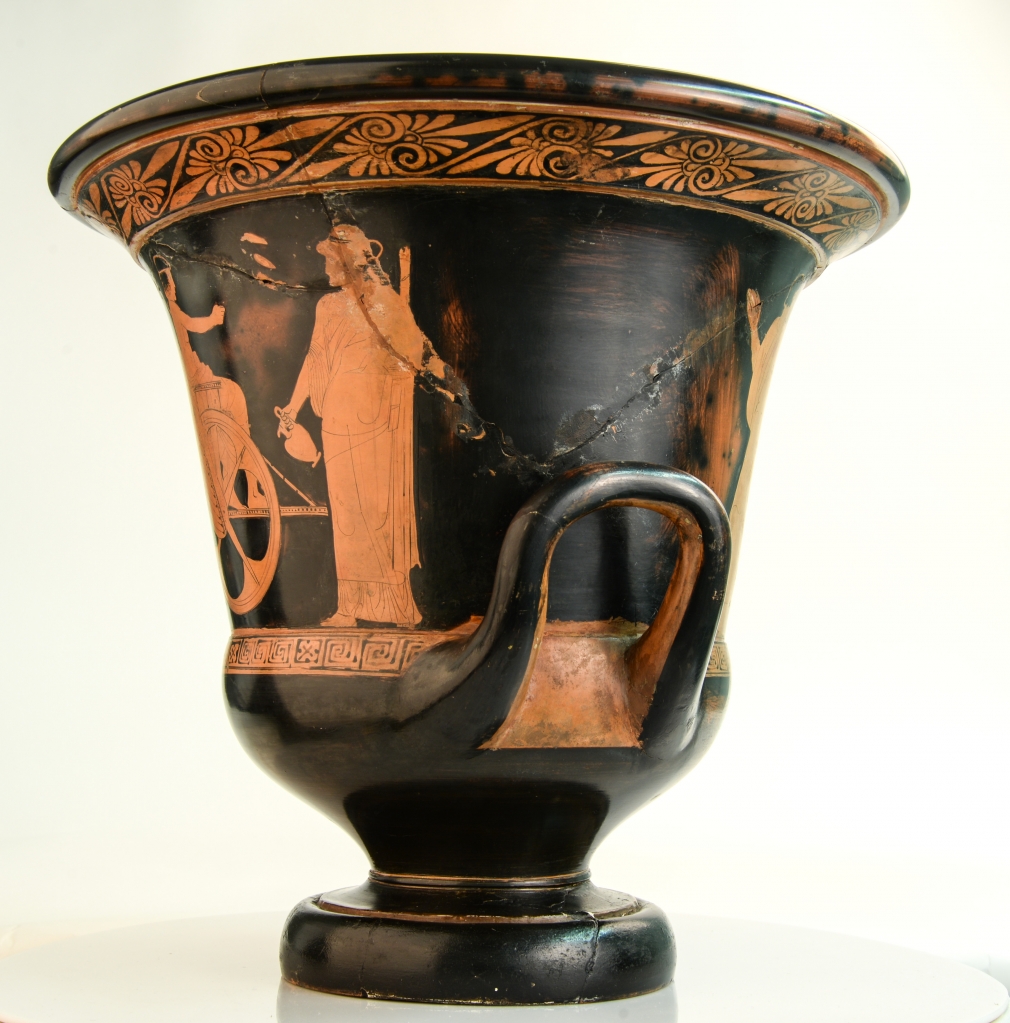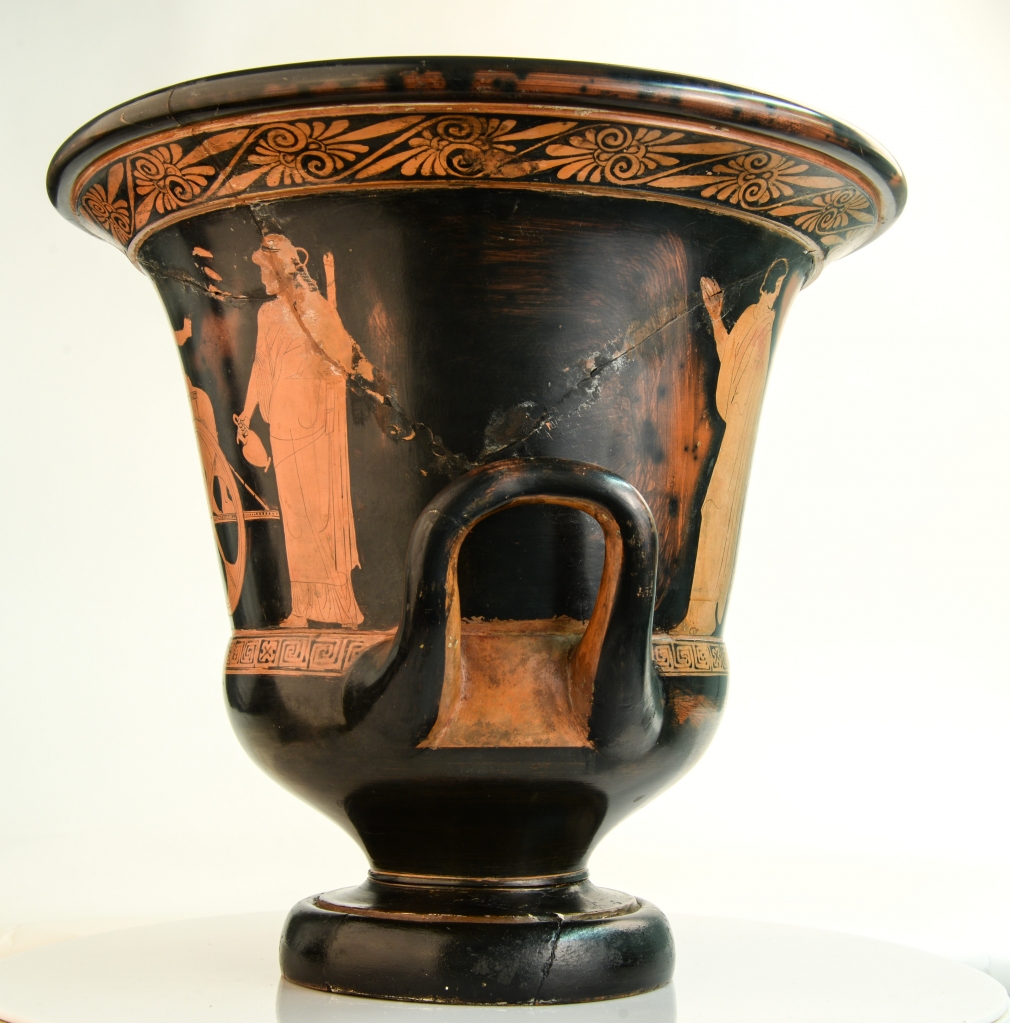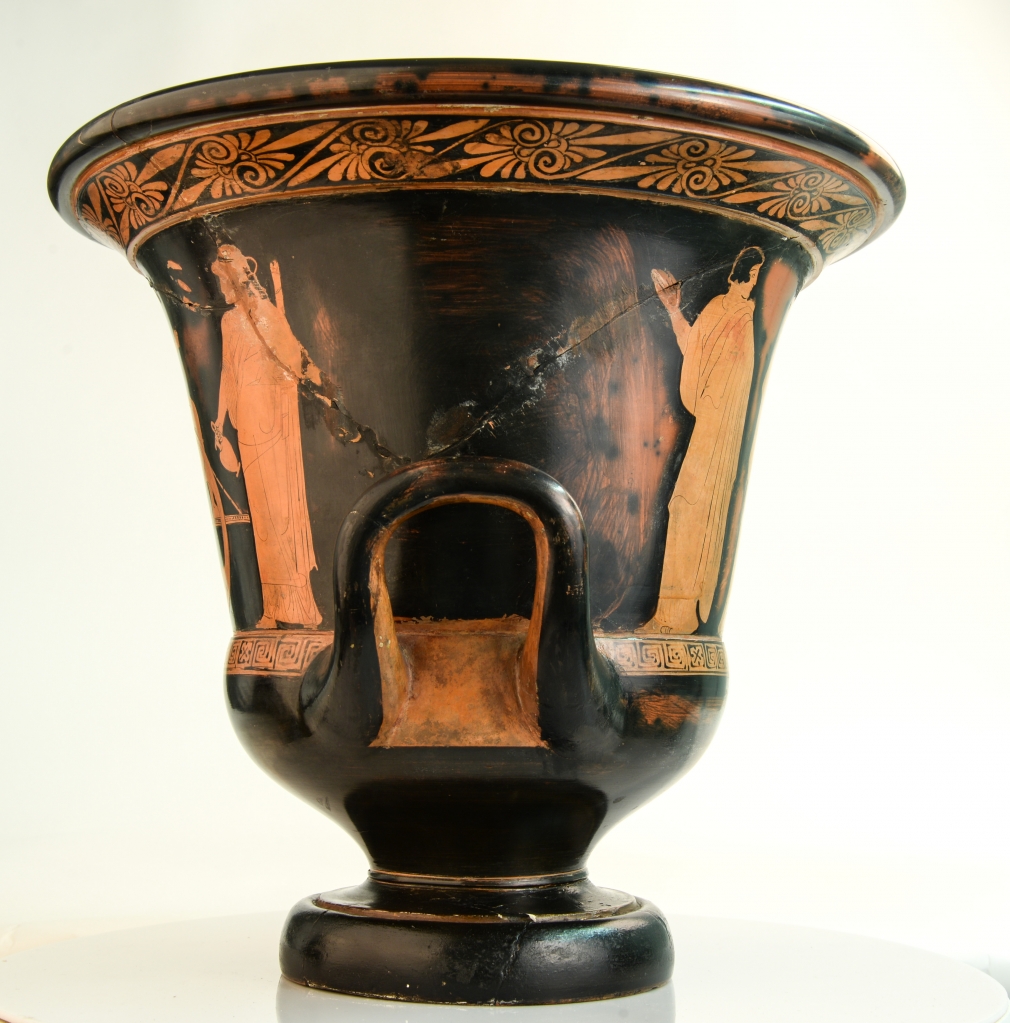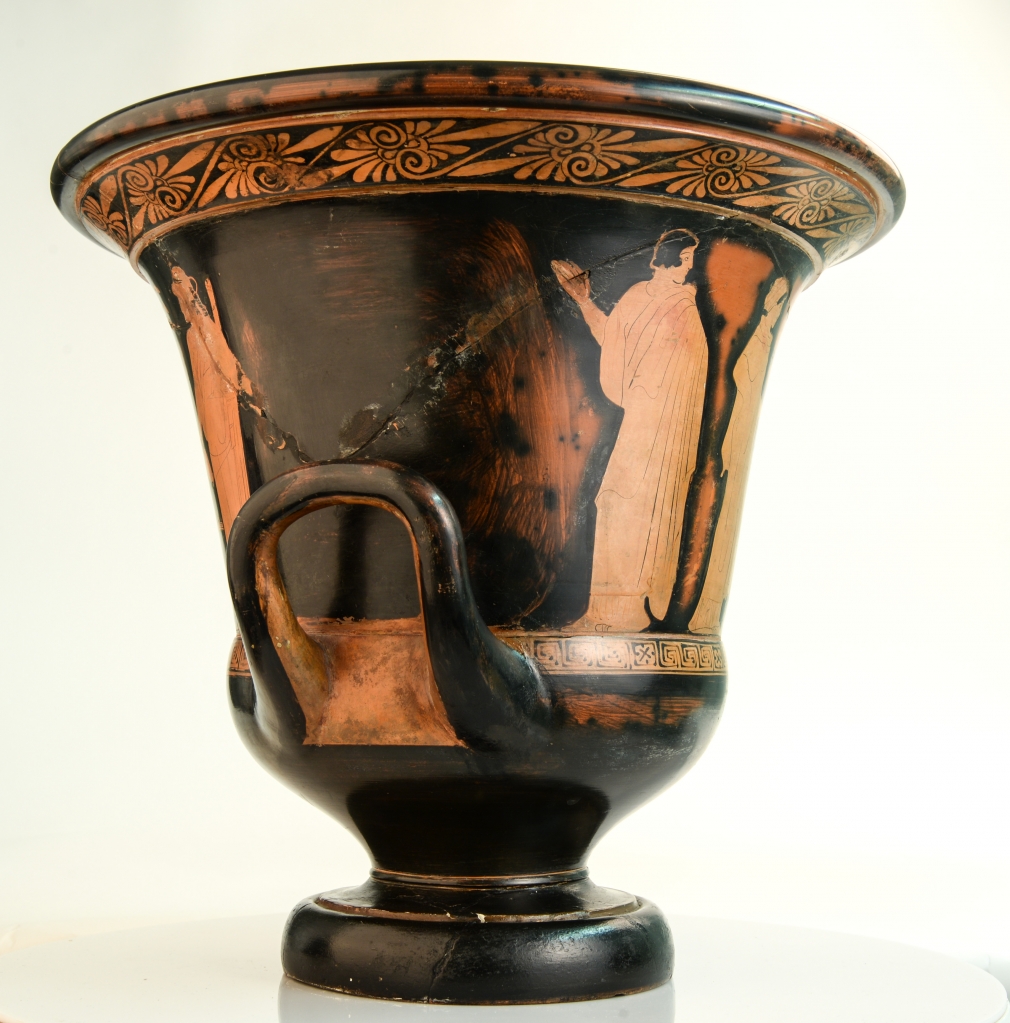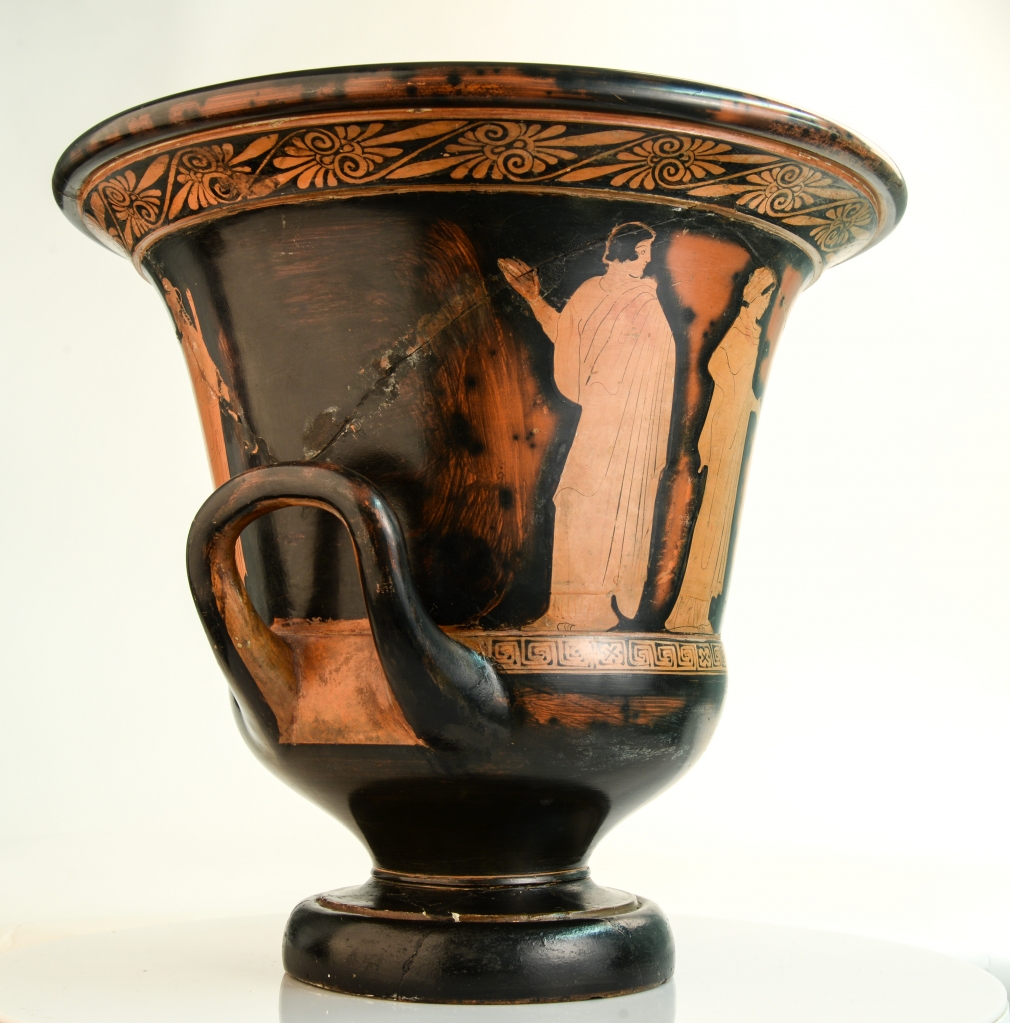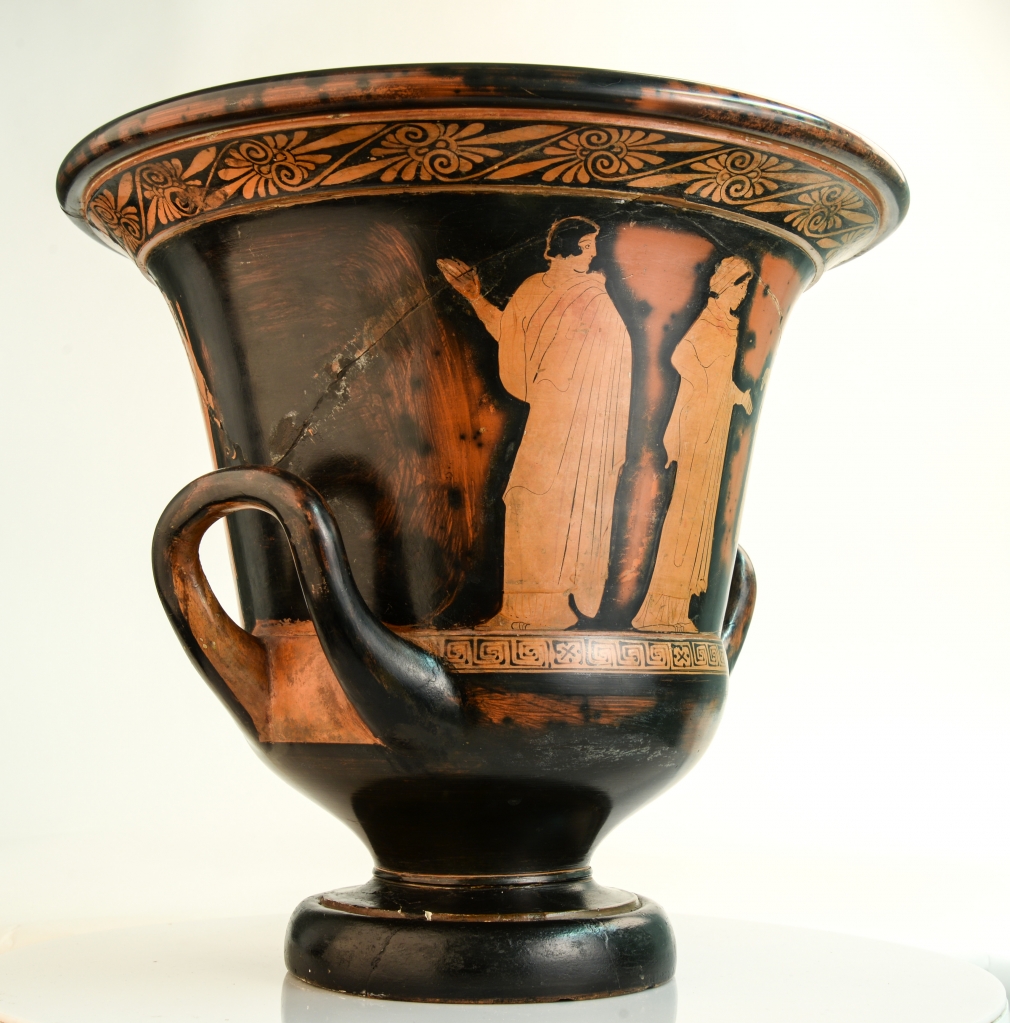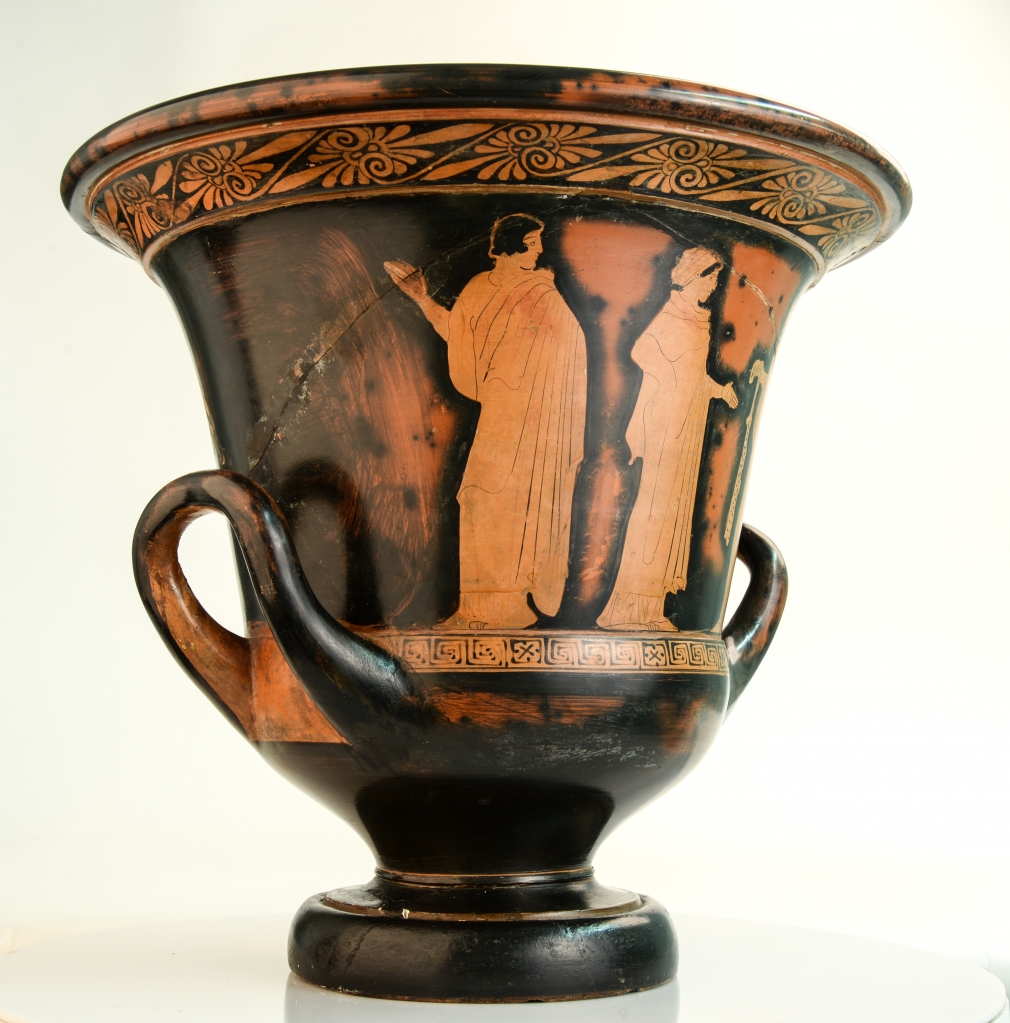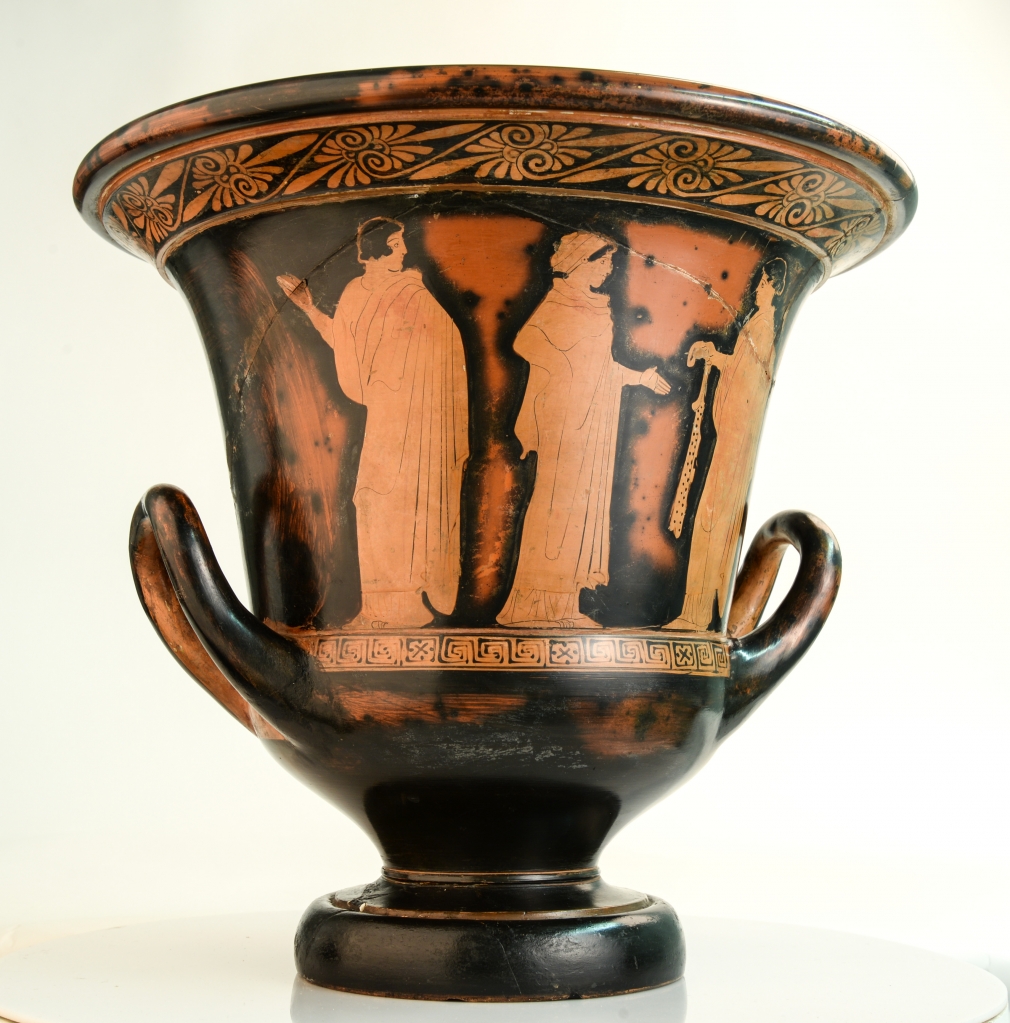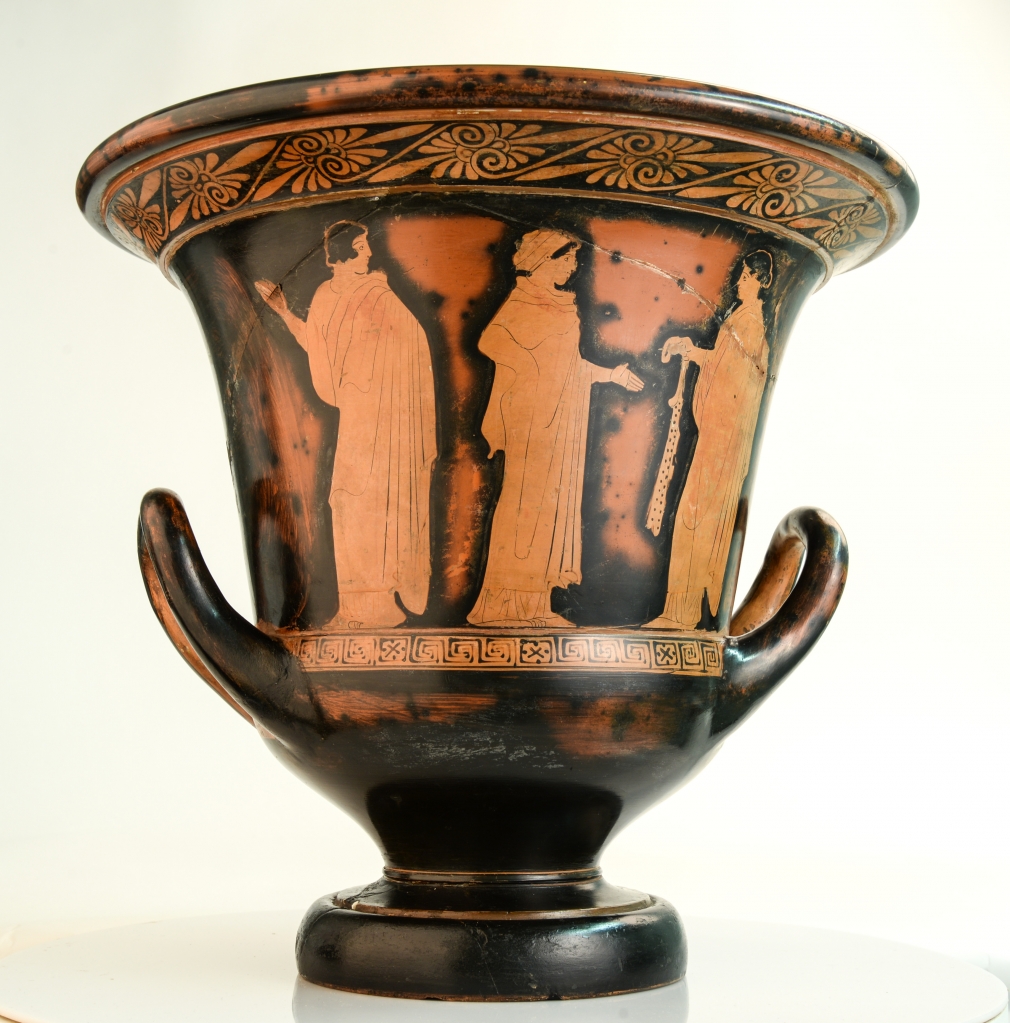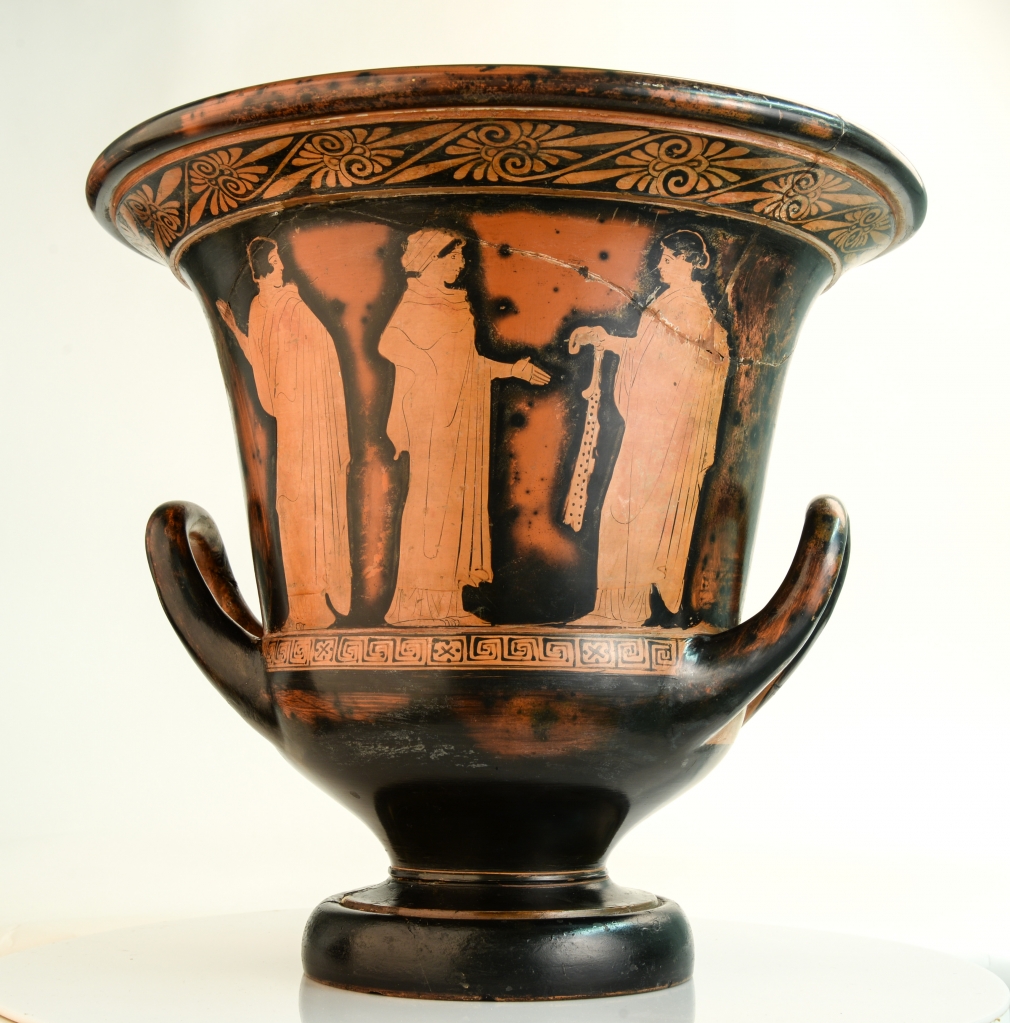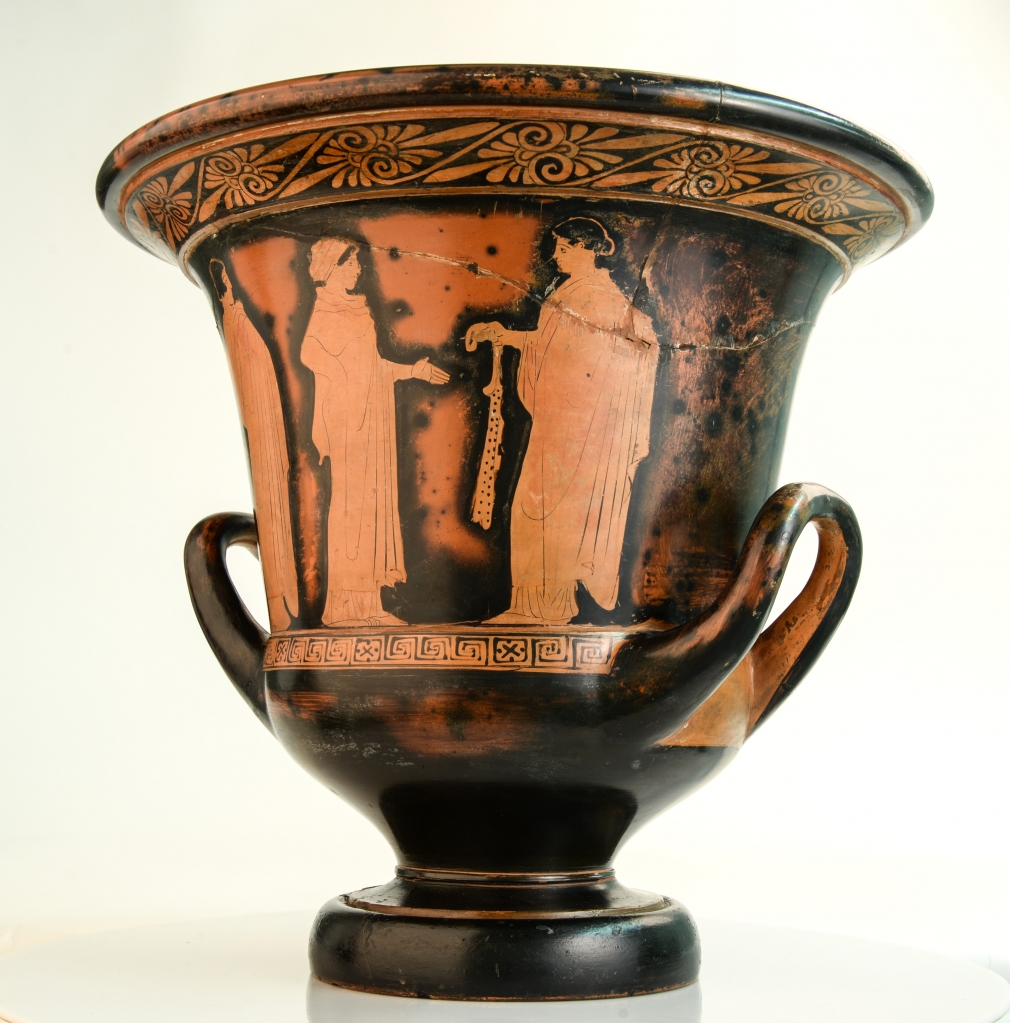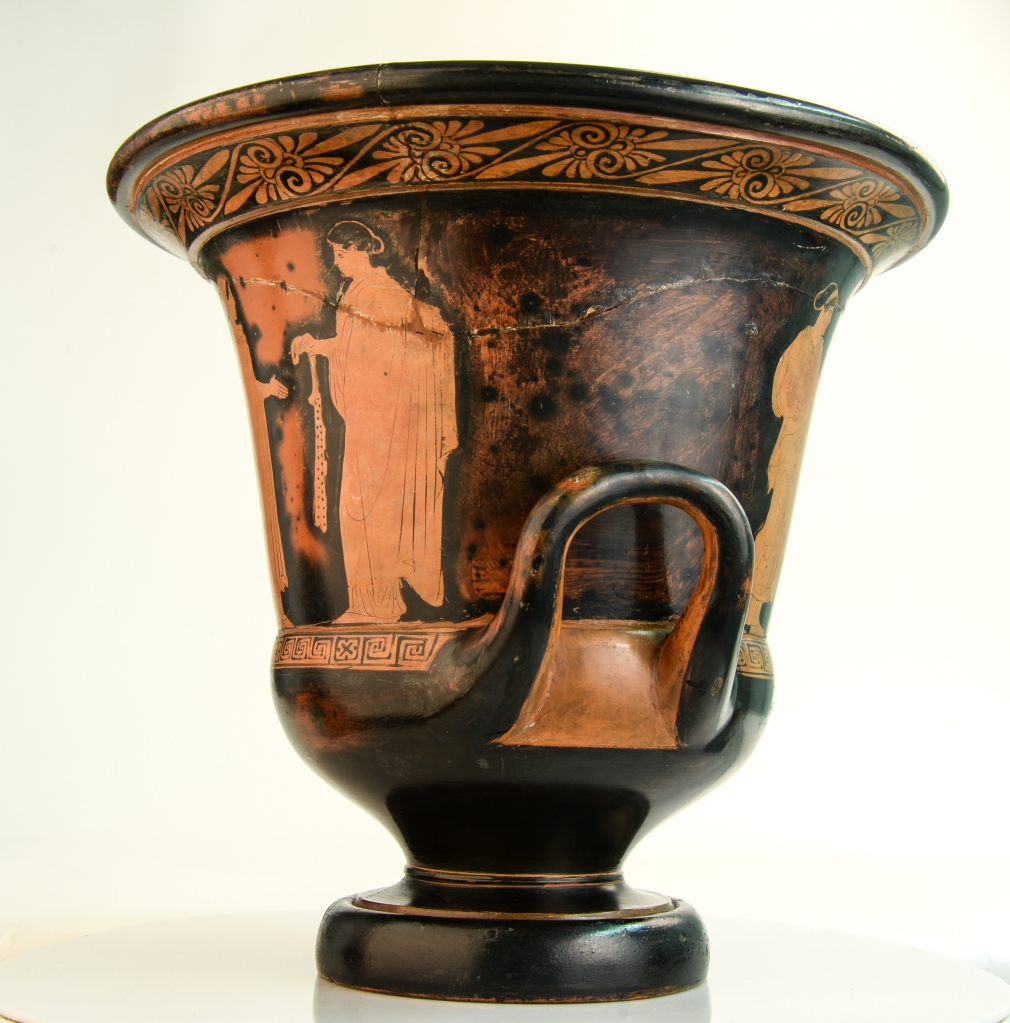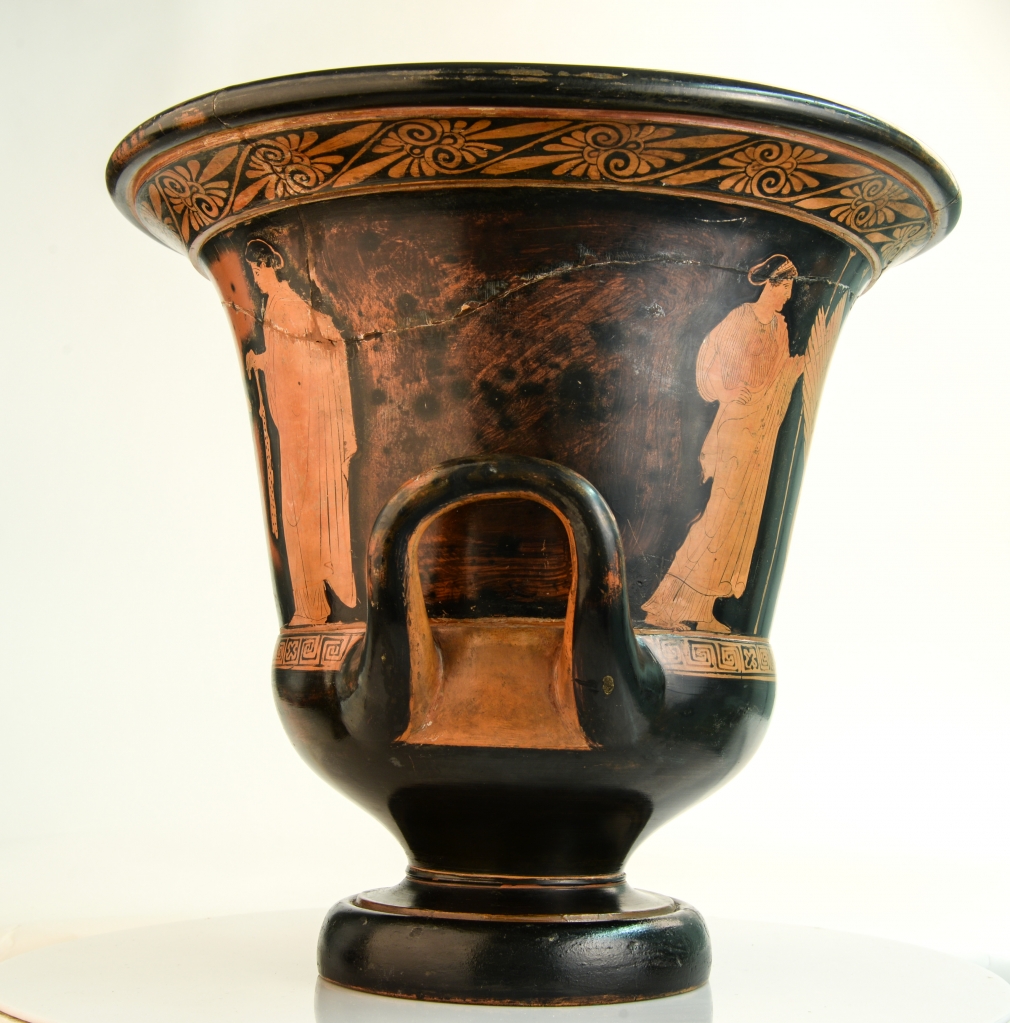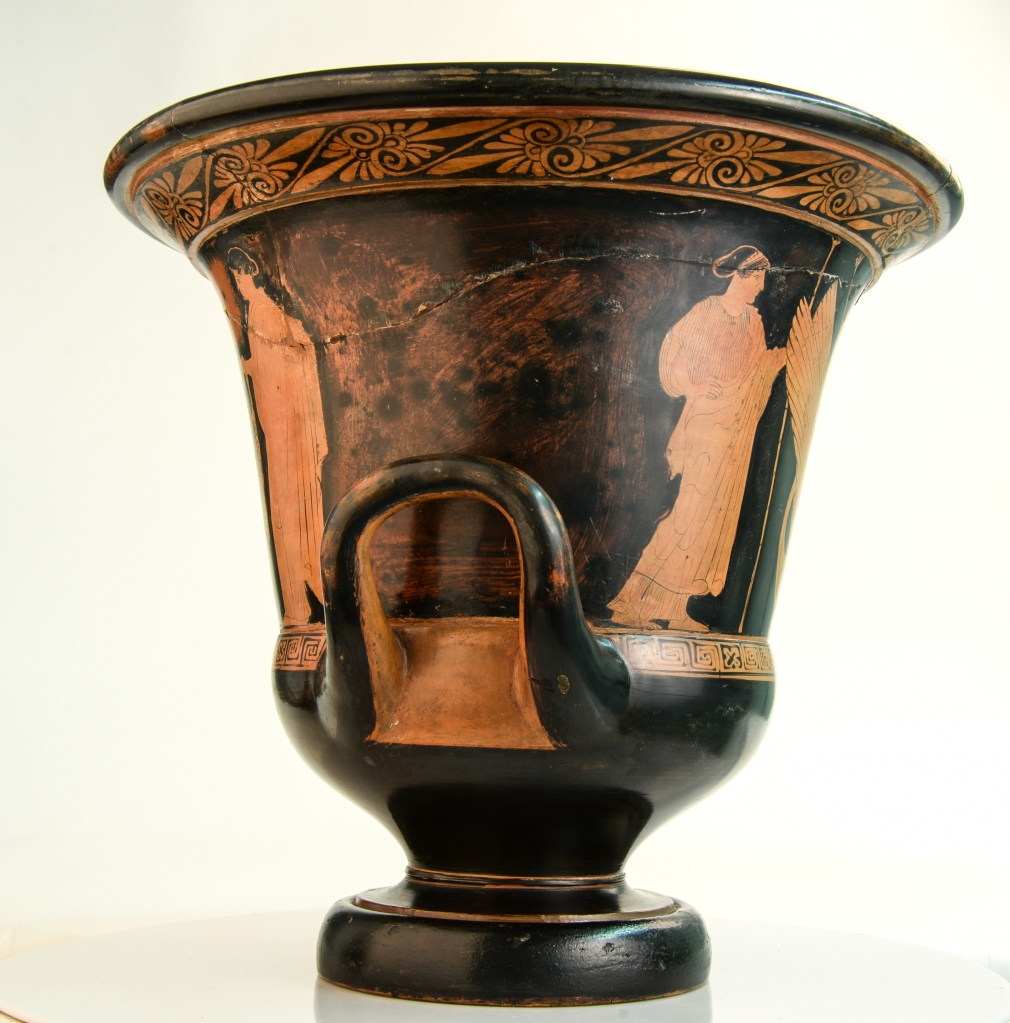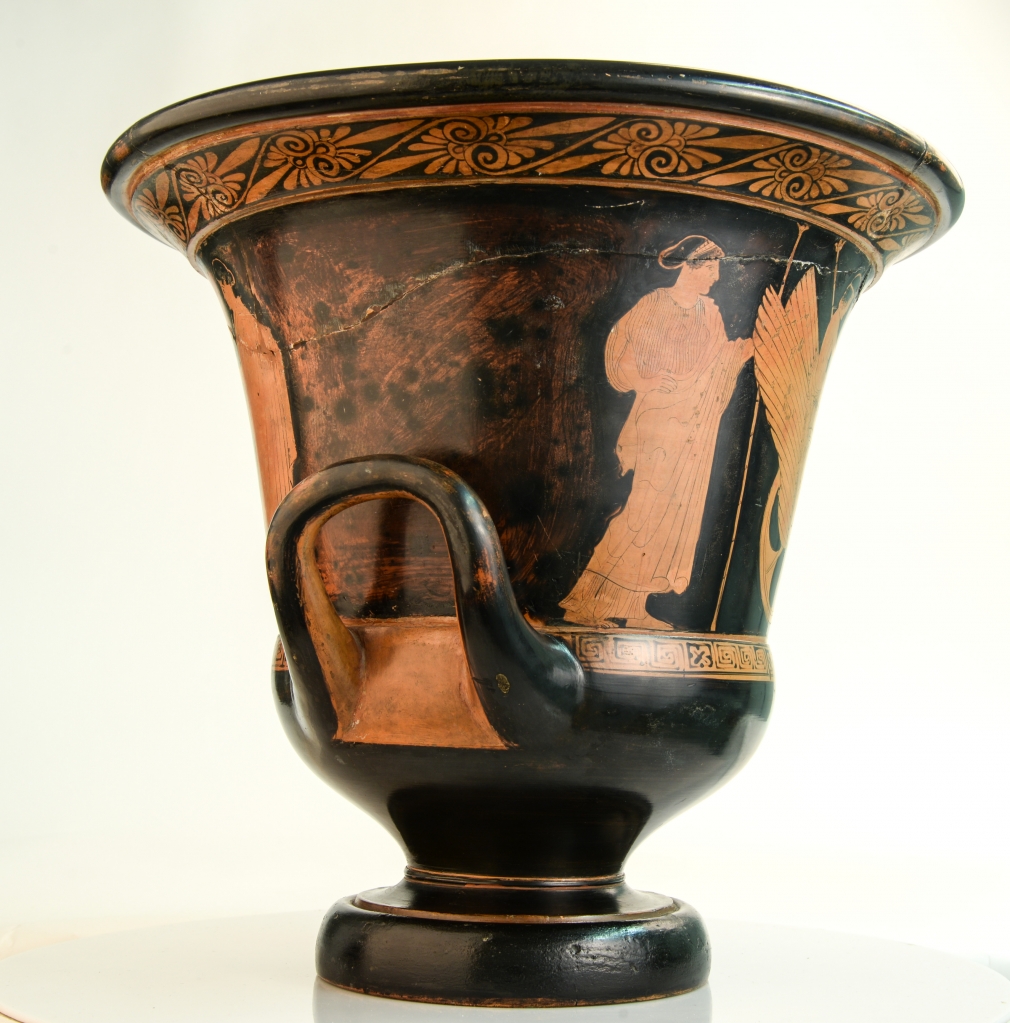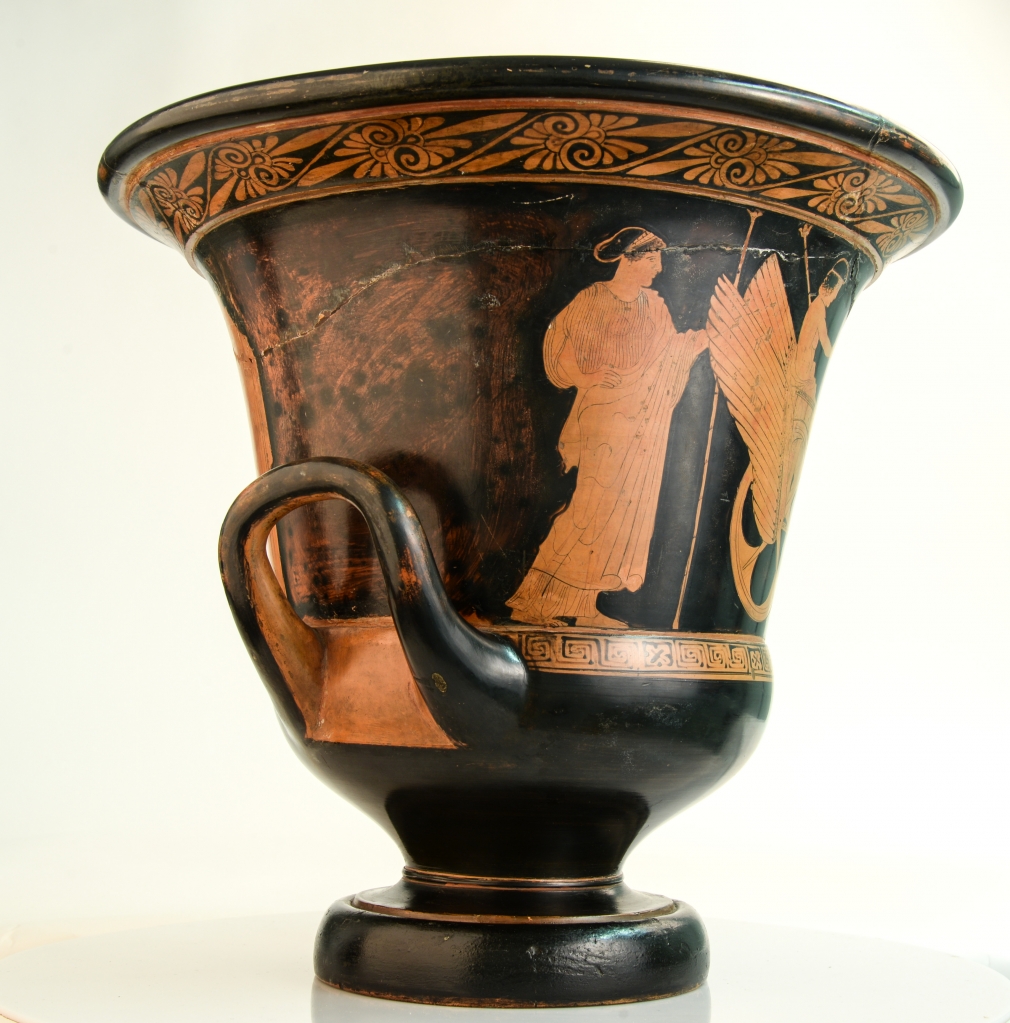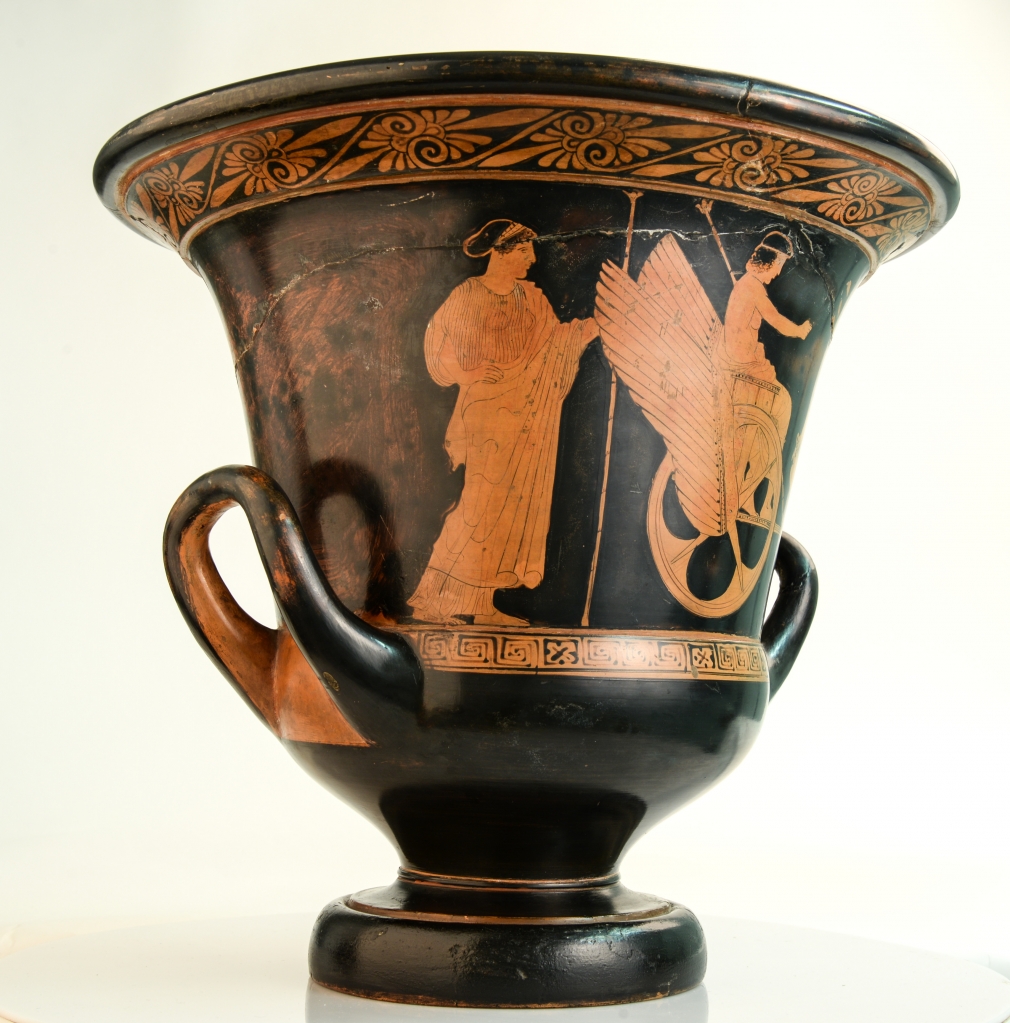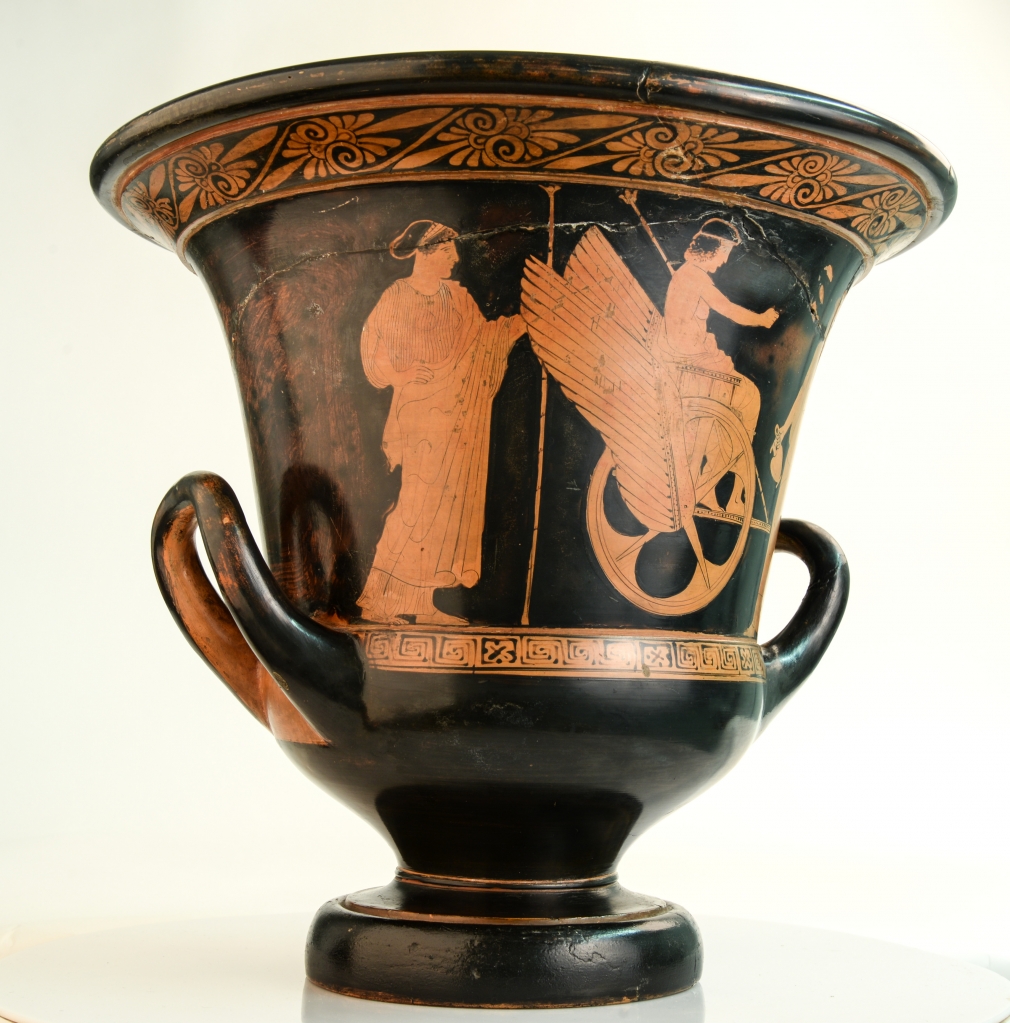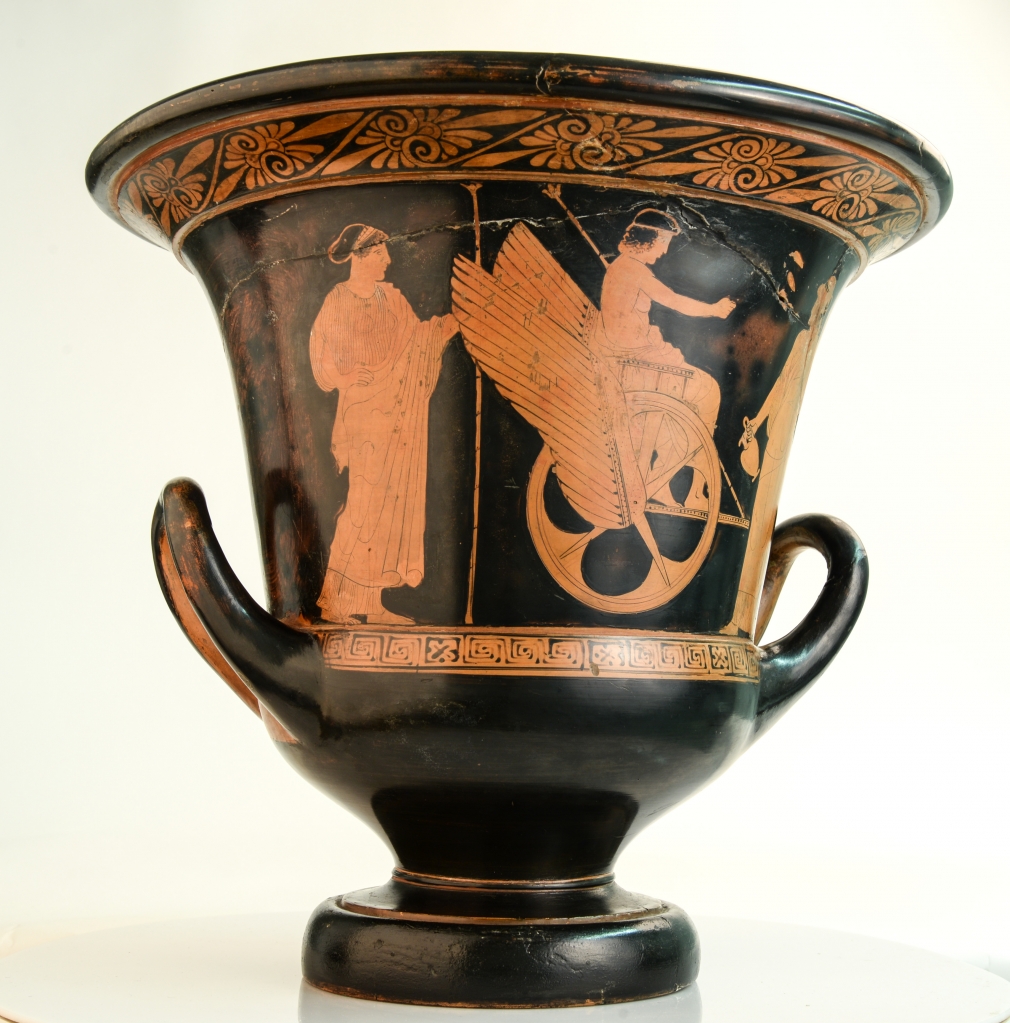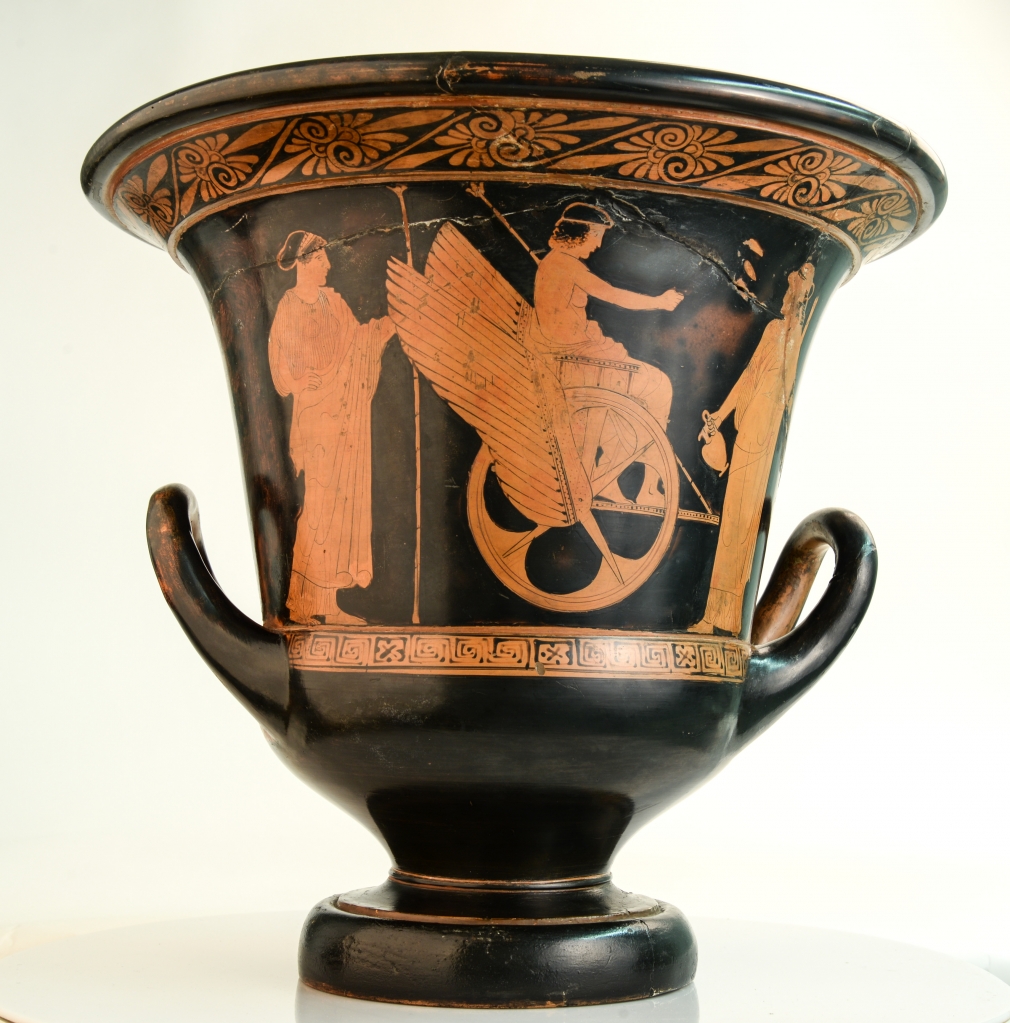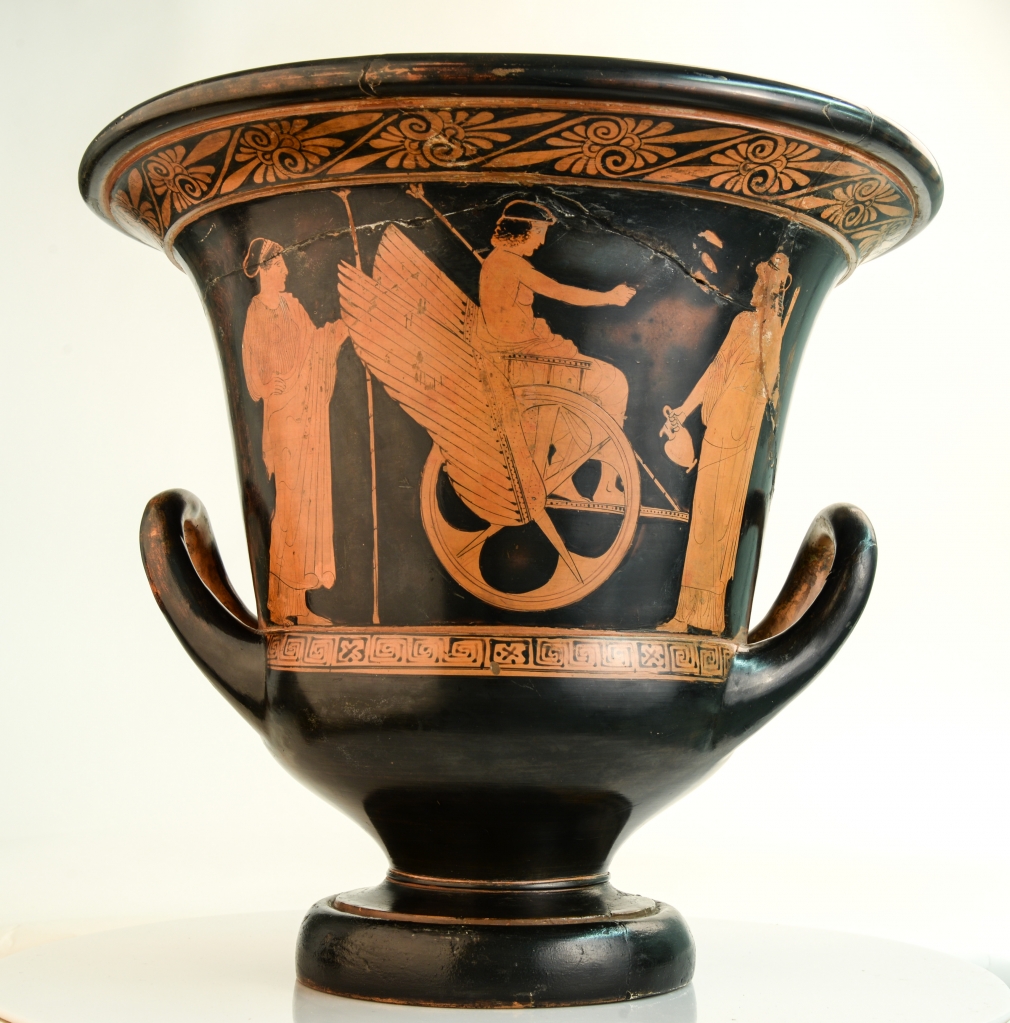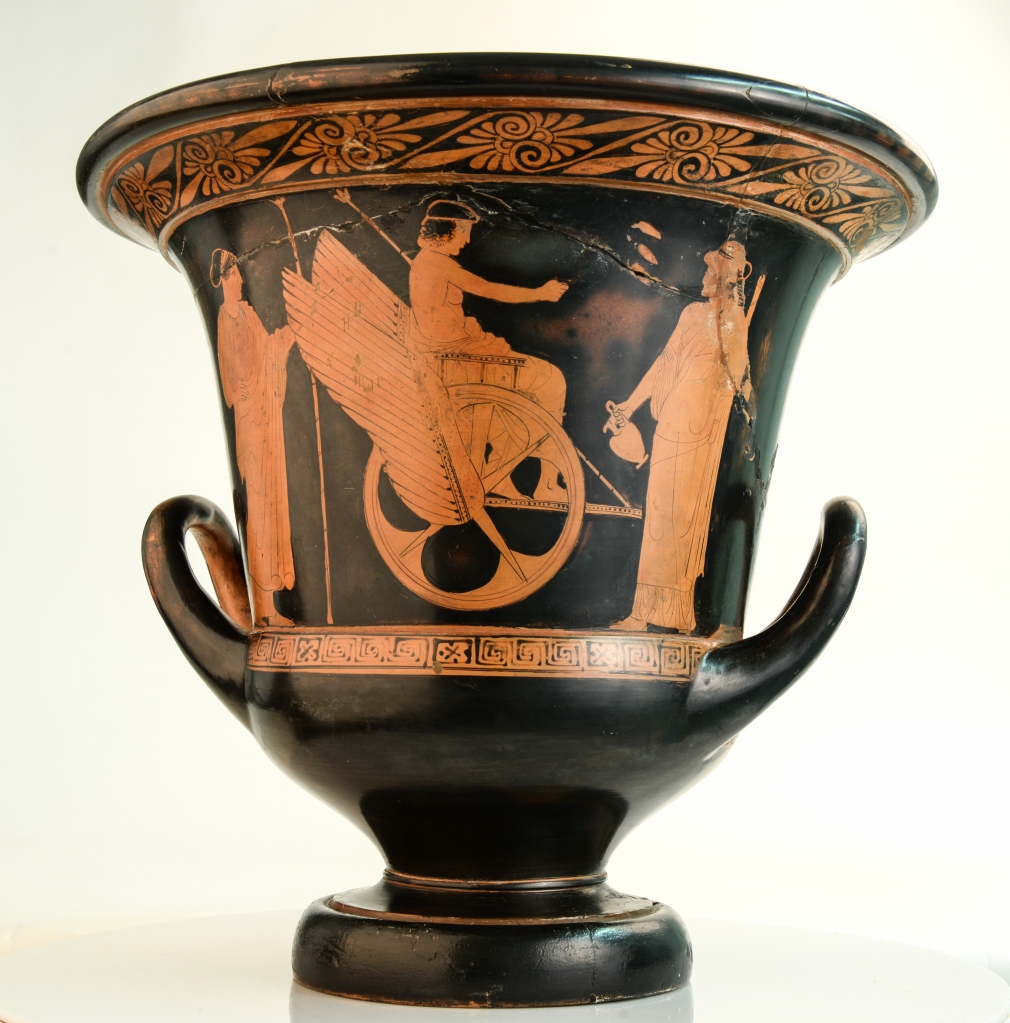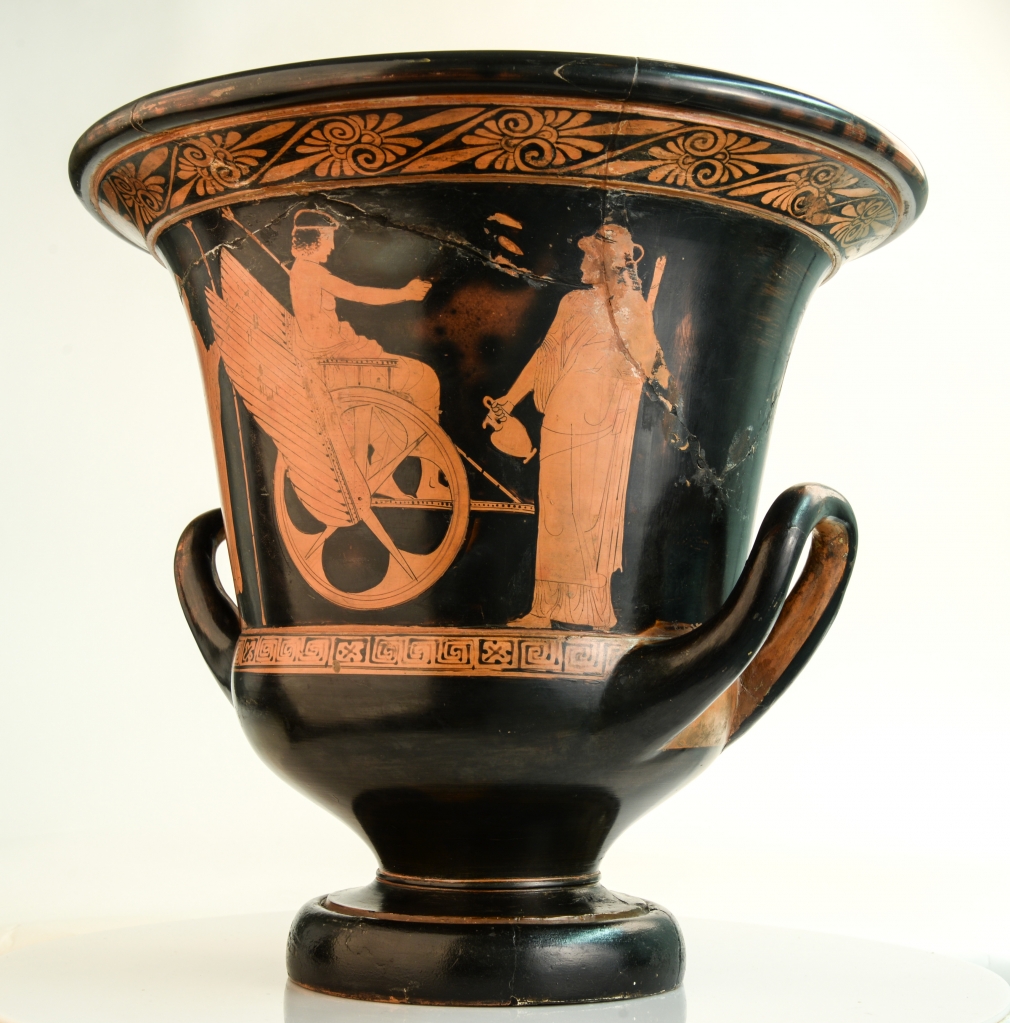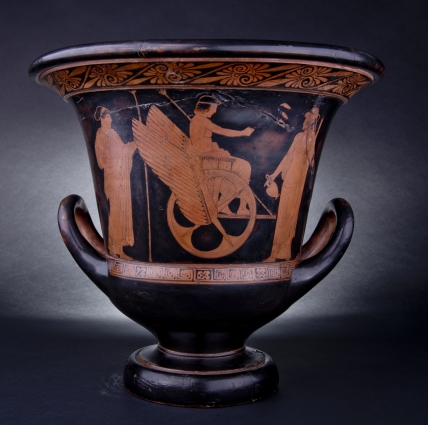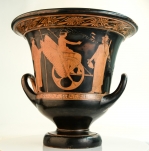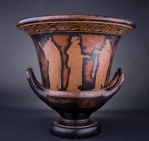Krater, E48.67
Physical Description
Athenian red figure kalyx krater
Pedestal base. Two loop handles on either side of belly. Long, wide neck, flares out at rim.
On the front is a composition showing the departure of Triptolemus seated on a winged chariot. Standing on either side of him are Demeter the goddess of agriculture and her daughter Persephone. Triptolemus is credited with bringing the knowledge of agriculture to the world on his chariot.
On the back are depicted three women one of whom holds a flute-case of skin.
Description from "Greek Vases in the Otago Museum:"
The scene on the front is the departure of Triptolemus. After Persephone, daughter of Demeter the corn goddess, was carried off to the underworld by Hades, her mother went through the world searching for her in the guise of an old woman. On her wanderings she was befriended by the King of Eleusis near Athens, and in return she and Persephone showed Triptolemus, one of the princes of the royal house, the arts of agriculture, and gave him a winged chariot in which he travelled through the world teaching mankind to plough and sow corn. Our picture shows him seated in his chariot. His right and is stretched out to Persephone, who stands facing him, holding the jug for his final drink offering(artist has omitted bowl from which it was poured). Behind the chariot is Demeter with a long sceptre in her left hand. The Eleusinian Mysteries, a sort of miracle-play base on the story of Persephone and Demeter, were one of the most important and most distinctive parts of the state religion of Athens. On the back of the vase are three draped women.
Pedestal base. Two loop handles on either side of belly. Long, wide neck, flares out at rim.
On the front is a composition showing the departure of Triptolemus seated on a winged chariot. Standing on either side of him are Demeter the goddess of agriculture and her daughter Persephone. Triptolemus is credited with bringing the knowledge of agriculture to the world on his chariot.
On the back are depicted three women one of whom holds a flute-case of skin.
Description from "Greek Vases in the Otago Museum:"
The scene on the front is the departure of Triptolemus. After Persephone, daughter of Demeter the corn goddess, was carried off to the underworld by Hades, her mother went through the world searching for her in the guise of an old woman. On her wanderings she was befriended by the King of Eleusis near Athens, and in return she and Persephone showed Triptolemus, one of the princes of the royal house, the arts of agriculture, and gave him a winged chariot in which he travelled through the world teaching mankind to plough and sow corn. Our picture shows him seated in his chariot. His right and is stretched out to Persephone, who stands facing him, holding the jug for his final drink offering(artist has omitted bowl from which it was poured). Behind the chariot is Demeter with a long sceptre in her left hand. The Eleusinian Mysteries, a sort of miracle-play base on the story of Persephone and Demeter, were one of the most important and most distinctive parts of the state religion of Athens. On the back of the vase are three draped women.
References
Handbook to the Greek Vases in the Otago Museum; Mr J K AndersonProvenance
Maker
Attributed to: The Polygnotan GroupMeasurements
Height: 356mmAll Rights Reserved

